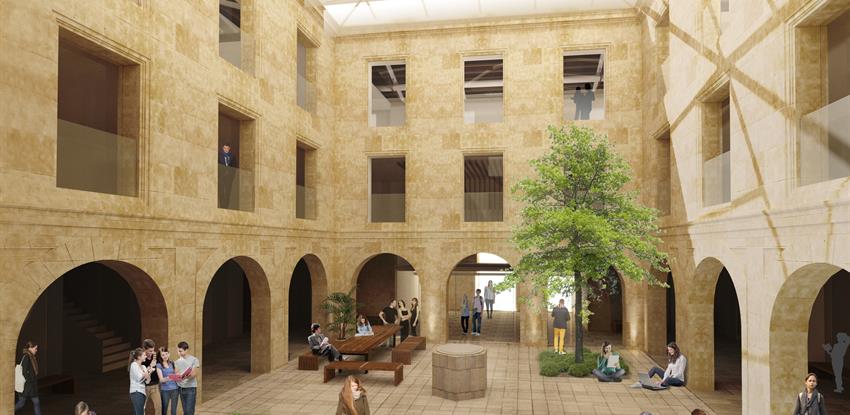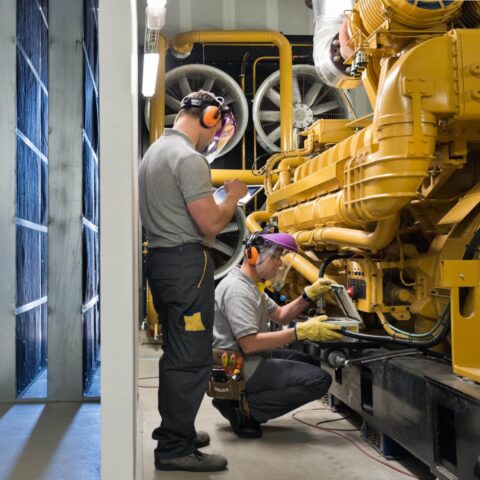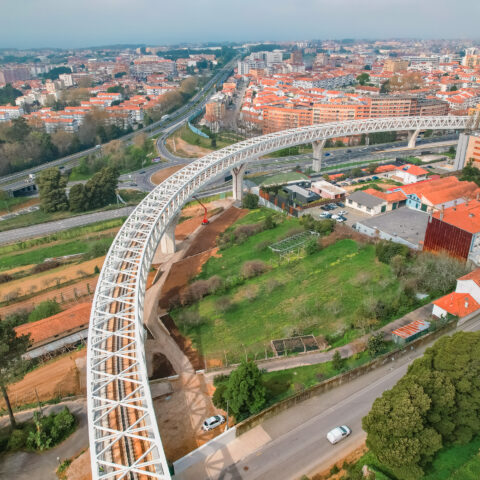Since July 2017, Ferrovial Agroman has been working on the rehabilitation of the San Bartolomé Hall of Residence for the University of Salamanca (USAL). With a budget of over 5 million Euros, the company will redesign one of the oldest halls of residence, dating back to 1401. Once works are completed, the building will become a modern learning centre for students of Spanish as a foreign language, as part of the University’s Cursos Internacionales priority programme which is currently spread over a number of different university buildings.
The new 'Bartolo', as the building is affectionately known in the city, is a corner building with two storeys on the side of Plazuela de San Bartolomé, and up to three storeys on Cuesta de Oviedo and Plaza de Fray Luis de León. Upon completion of the project, which has been prepared by Ferrovial Agroman, the building will house 31 lecture halls, a large conference hall and a language laboratory, in addition to libraries and various work rooms. It will have a capacity of up to 1,200 people over a total area of 5,000 m2. This renovation project will provide all the course needs, both from a teaching and from an administrative and research perspective. Guillermo Fernández Pellín, Director for the Castilla and León region, said:
"Quite apart from its technical complexity, this is an iconic project, as it has been envisaged as part of the activities scheduled for commemorating the VII centenary of the University of Salamanca, the oldest in Spain and in the Spanish-speaking world."These renovation works affect a building which has been subjected to successive construction projects through new acquisitions and extension of the University premises. “The building lies within the city’s historical centre, in an area of ‘archaeological significance’ as determined by the local land planning document”, explains Juan Muñoz Andrés, Works Manager. "Having completed the required demolition works, most of which were carried out manually, we are now excavating the land under archaeological supervision, with special attention to the remains of the old 12th century church of San Bartolomé, which gives its name to the building but disappeared towards the beginning of the 20th century (the church was consecrated in 1174 and rebuilt in the 15th century). Other significant findings are the remains of old buildings, palaces and stately homes; hidden streets which 'draw' the city for us as it was before, underground vaults, remains of Roman pottery, old coins, etc. Parts of all this will be integrated into the final project." Some of the specific materials found in the building, such as sandstone, will be used in the renovation, in combination with other more modern materials such as copper, which will be used as panels, and granite. This means that the historical building will be rebuilt keeping its original structure and main access via Plaza de Fray Luis de León, its old external walls and the central patio, which will be covered with a glass roof, as well as all other significant architectural elements. All the structures which have been added on over the years or are ancillary to the main historical building will also be demolished and replaced by a new building housing the lecture halls, which will comprise three storeys around a closed atrium with a glass roof. This new building will be connected to the historical building and have its own access via the Plaza de San Bartolomé. Pursuant to current legislation, renovation of San Bartolomé also means that it will become a sustainable building, with the provision of a variety of systems, the most significant being a system for capture, storage and use of solar energy to partly cover the building’s demand for hot water. Other projects carried out by Ferrovial Agroman for the University of Salamanca are the Centre for Ultrashort and Ultraintense Pulsed Lasers (Head office for the Petawatt laser) at the Villamayor de la Armuña Campus in 2013; the Dioscorides building for the Biology Faculty in 2008; the Castilla and Leon Institute of Neuroscience in 2004; and the engraving lecture halls in the Fine Arts Faculty in 2000. The team working on the project, led by Juan Muñoz Andrés, are Soraya Fernández Bombín (Head of Production), Ángel José Méndez Fuentes (Site Manager) and José Luis Morena Gijón-Bonales (Works Administration).







